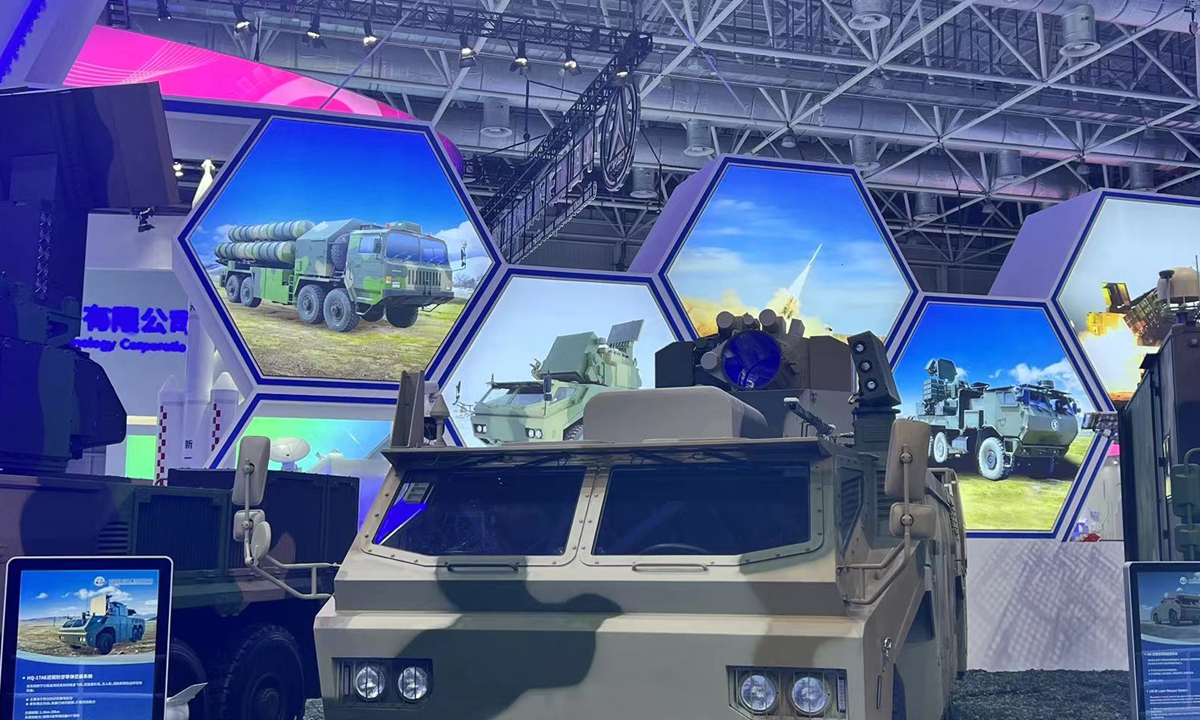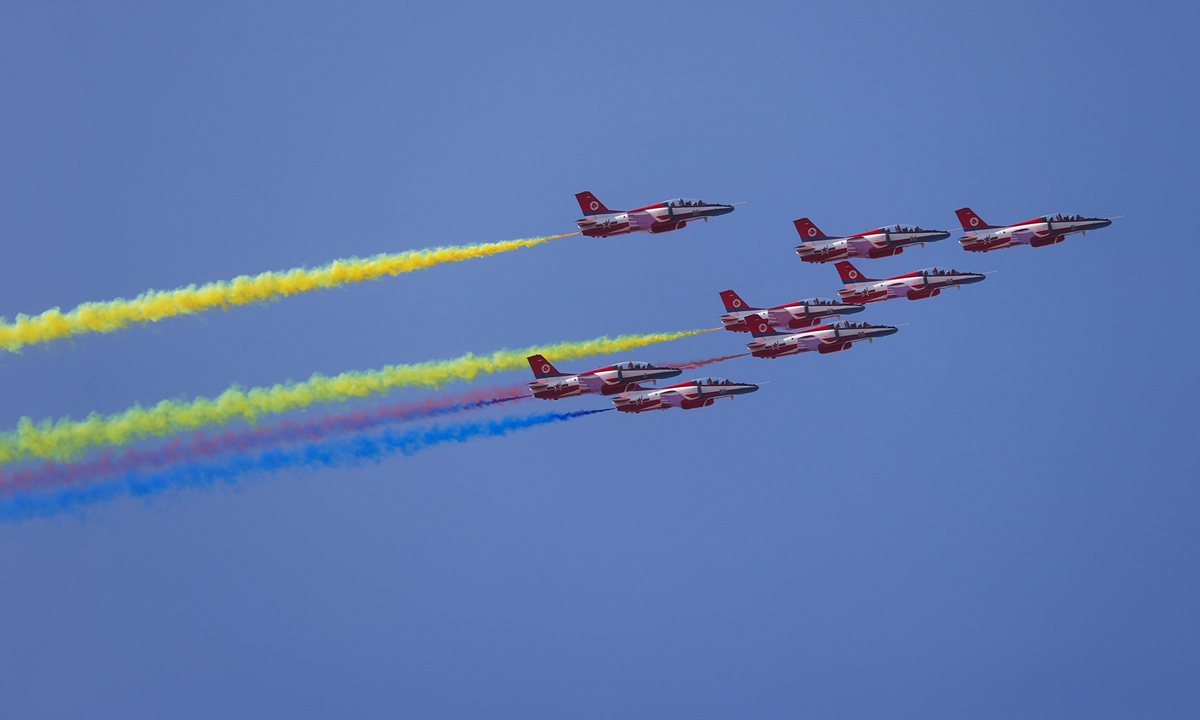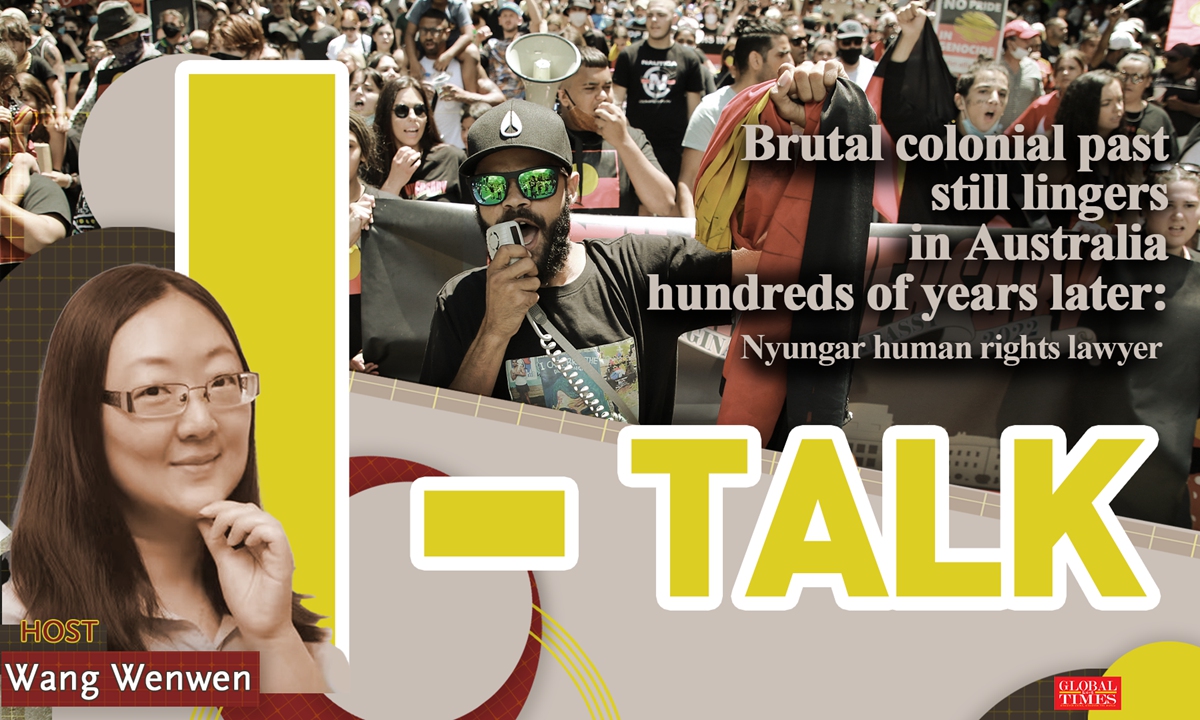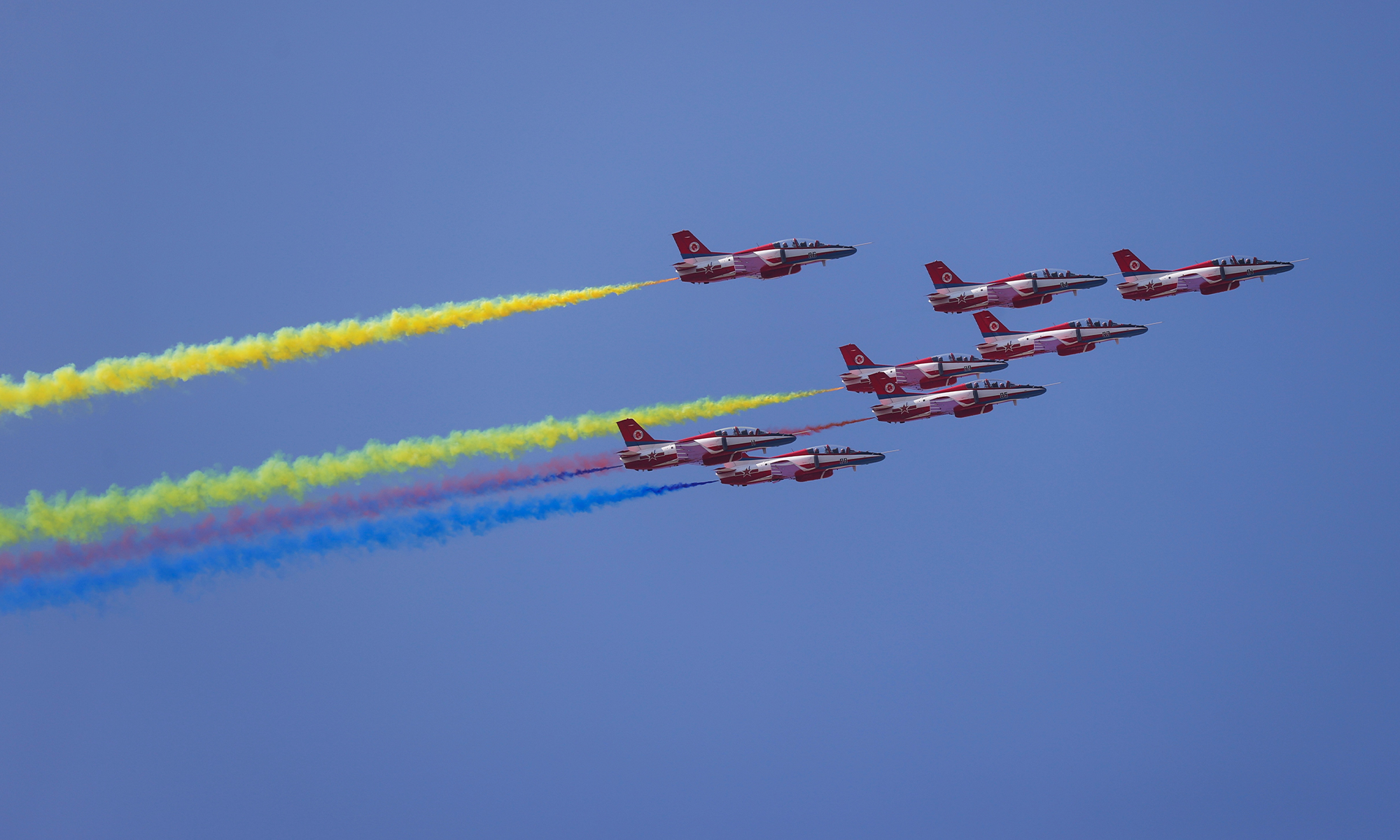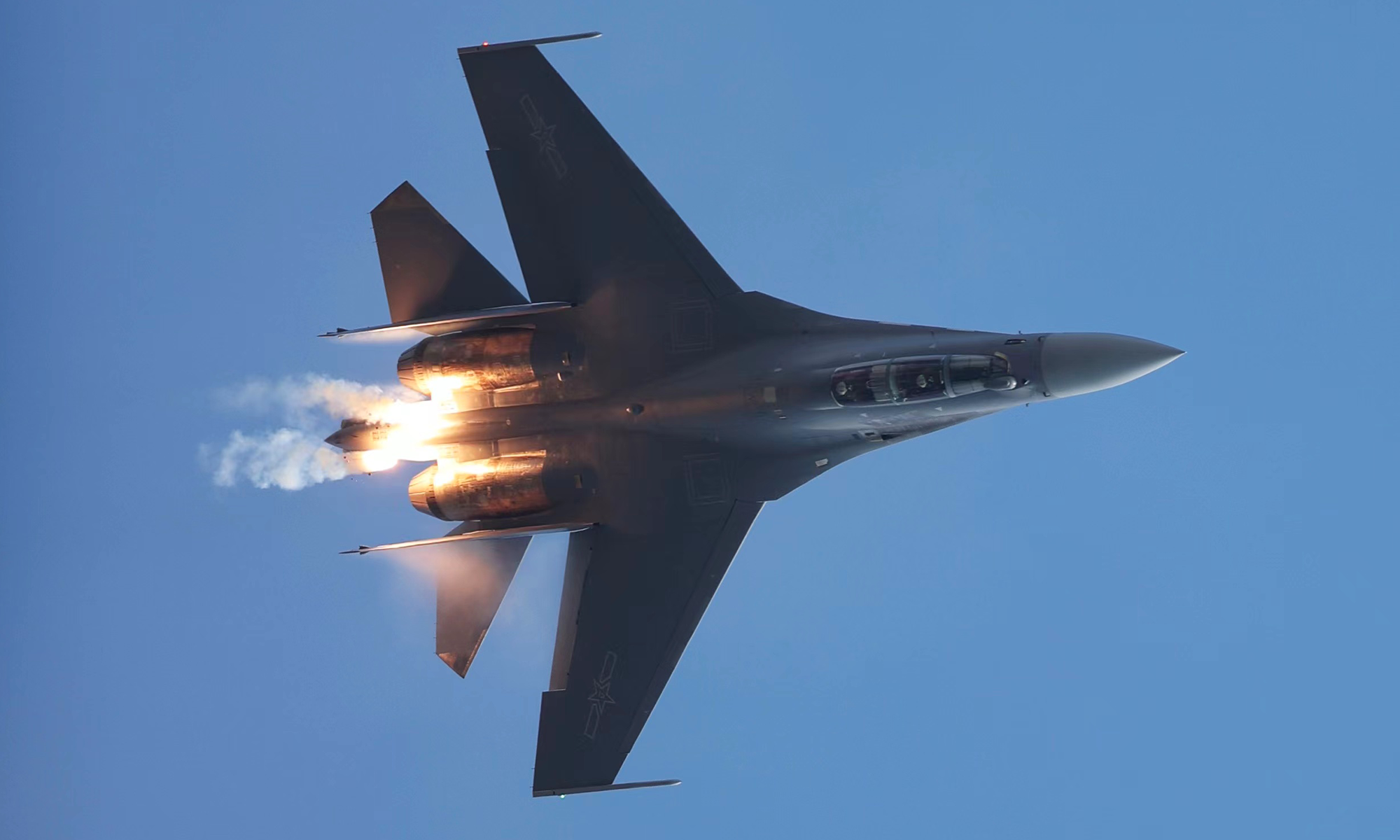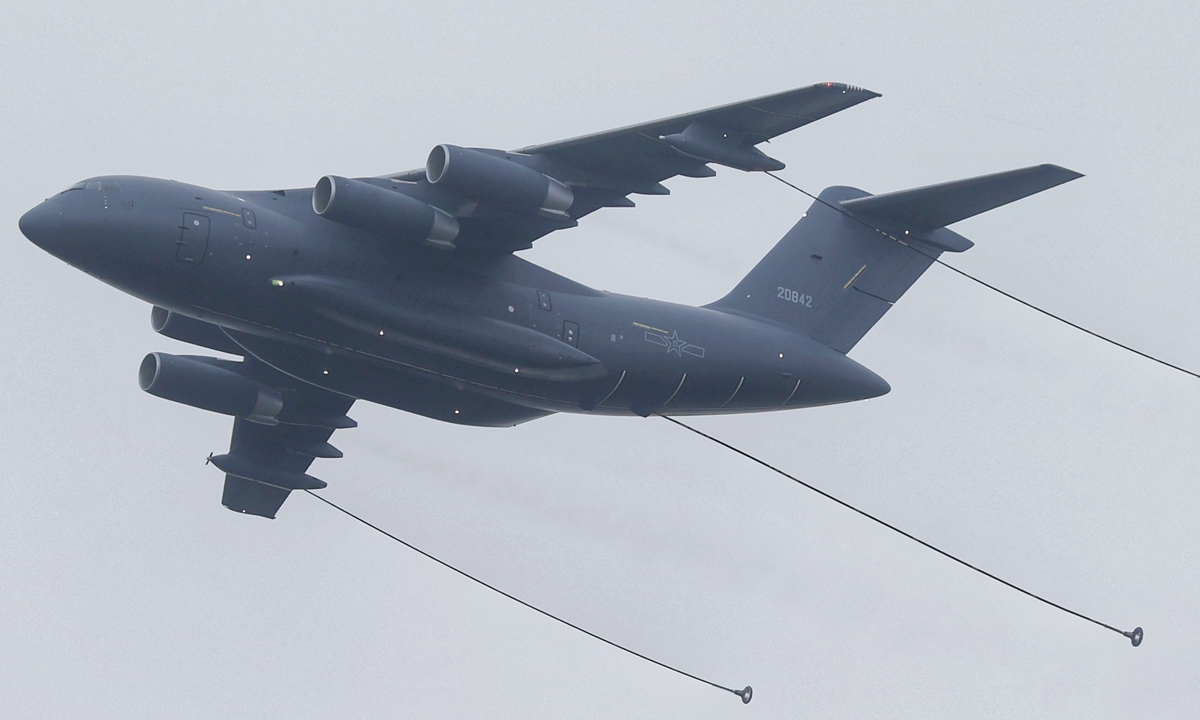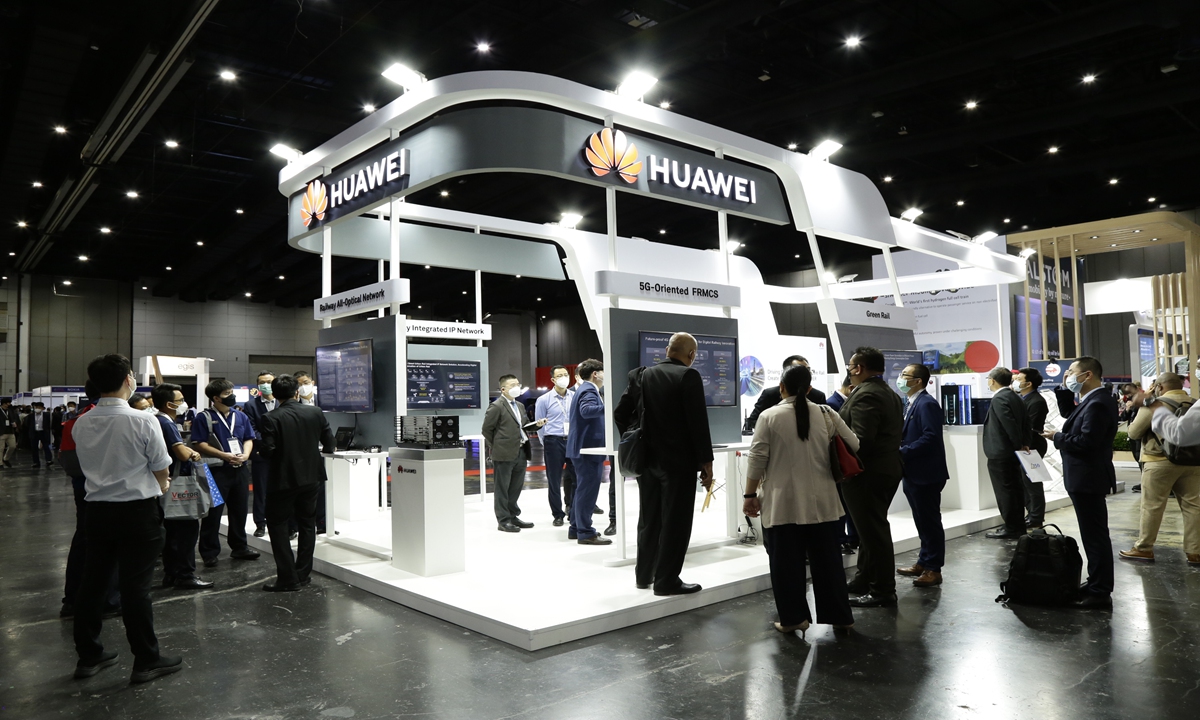J-20 fighter jets of the Chinese People's Liberation Army Air Force deliver dazzling flight performances at the opening day of Airshow China 2022 in Zhuhai, South China's Guangdong Province on November 8, 2022. Photo: Cui Meng/GT
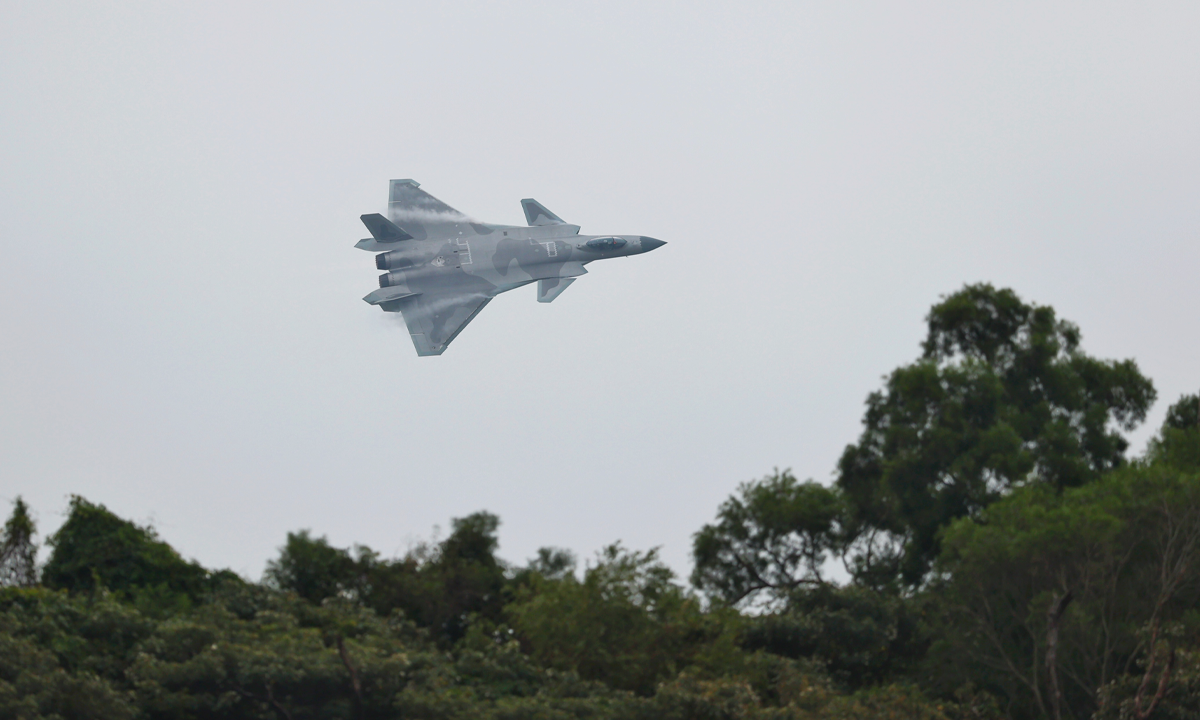
J-20 fighter jets of the Chinese People's Liberation Army Air Force deliver dazzling flight performances at the opening day of Airshow China 2022 in Zhuhai, South China's Guangdong Province on November 8, 2022.
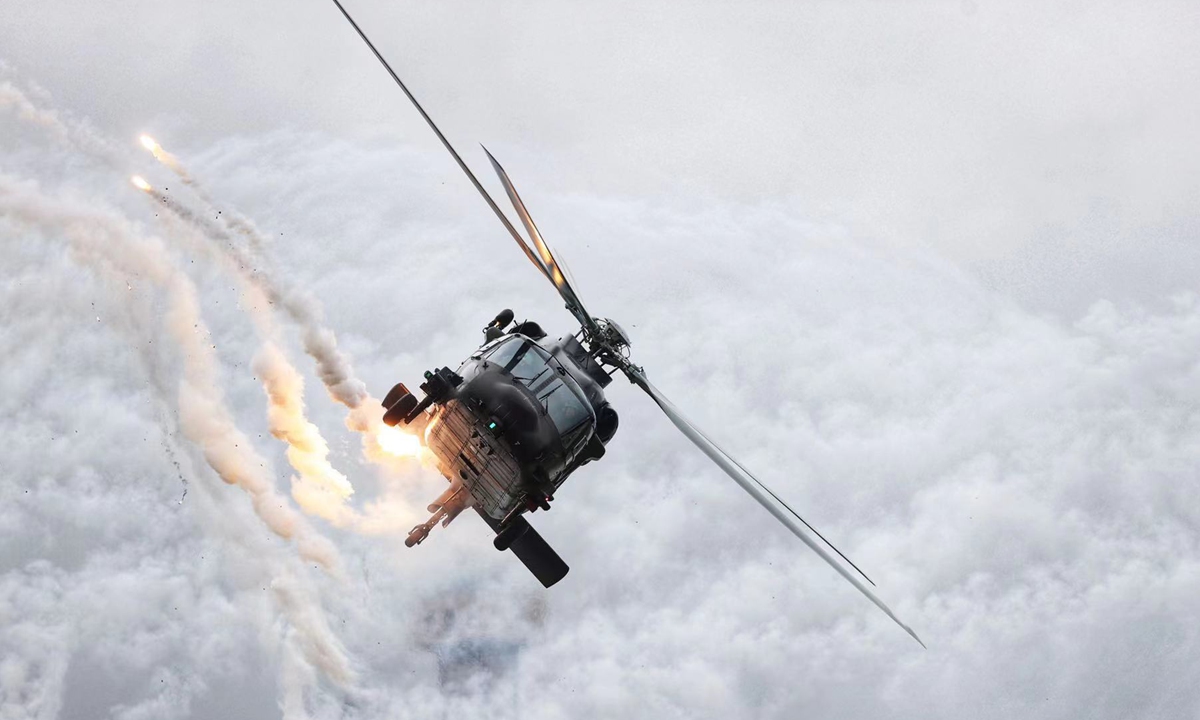
A Z-20 utility helicopter of the People's Liberation Army releases flares during a flight performance at the opening day of Airshow China 2022 in Zhuhai, South China's Guangdong Province, on November 8, 2022.Photo: Cui Meng/GT
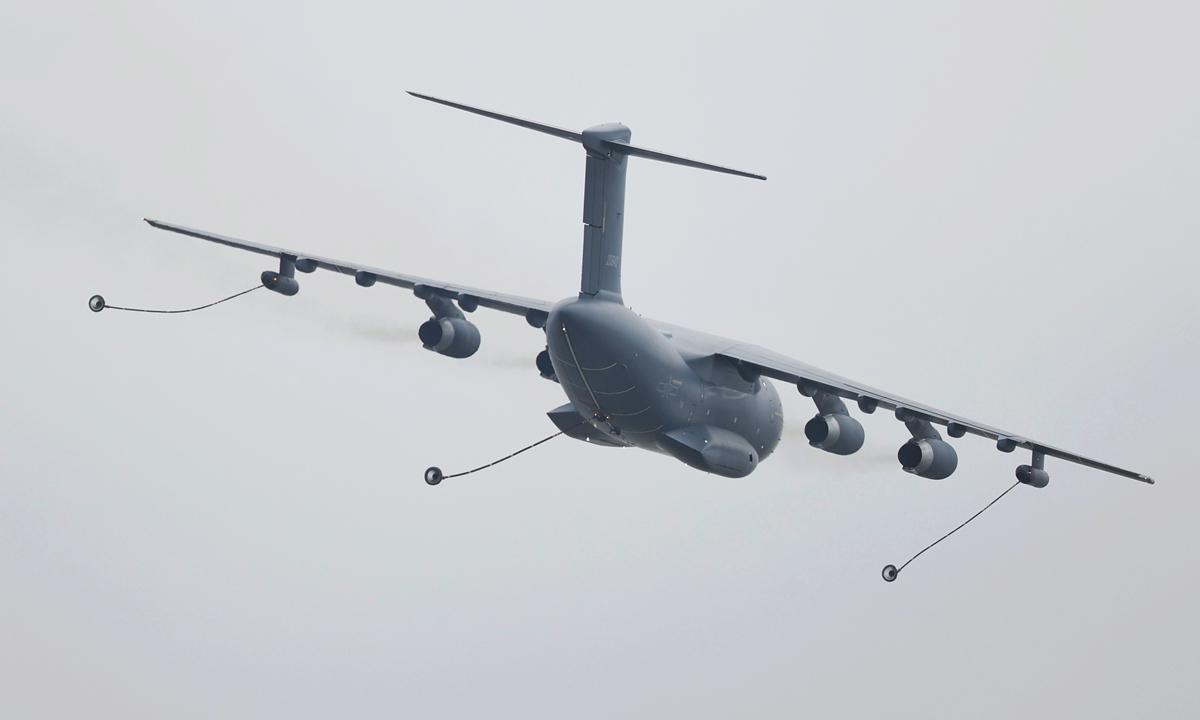
A YU-20 aerial tanker releases all three of its aerial refueling baskets during a flight performance at the opening day of Airshow China 2022 in Zhuhai, South China's Guangdong Province, on November 8, 2022.Photo: Cui Meng/GT
When the six-day Airshow China 2022 kicked off on Tuesday in Zhuhai, South China's Guangdong Province, spectators were greatly amazed by the country's most advanced J-20 fighter jets' outstanding flight performances with challenging maneuvers of tactical significance in a very humid weather, as well as their landing before the general public for the first time, which experts said, together with flight performances of the YU-20 aerial tanker and the J-16 heavy fighter jet among others, constituted a confident and high-profile move that not only showed the capabilities of the aircraft, but also served as a deterrence to "Taiwan independence" secessionist and external interference forces. After consecutive days of bad weather in Zhuhai, rainfall stopped on Tuesday, the first day of the airshow, blessing all the aircraft with a cloudy weather condition barely okay for the delivery, and maybe more importantly, the crowd's proper audience, of flight performances. Despite some strict COVID-19 prevention and control measures, the spectators found it all worthwhile when four J-20 fighter jets of the People's Liberation Army (PLA) Air Force appeared from afar in a diamond formation and flew across the event site. After some circling, two J-20s faded away into the clouds, and the other two dazzled the crowd with many challenging maneuvers with high Gs that tore the air apart, with the wakes distinctly visible because of the high humidity. While people already know that the J-20s would land on the ground for the first time at an airshow due to an earlier rehearsal, the audience still stood on their toes to get a clearer view on them. Many gathered as closely as they can to take pictures of the J-20s or have their photos taken with the J-20s, as this was their first opportunity to do so. "Thrilling, satisfying" are some of the words many spectators told the Global Times describing the event. When the J-20 performed its first landing at the show, many viewers shouted, "It is coming! It is like we are about to celebrate the Chinese lunar spring festival. Bravo! The Chinese PLA Air Force!" One of the last moves in the J-20s' performance was a rolling while ascending, with the aircraft's nose kept changing the direction it was pointing to. This shows that the J-20 has excellent mobility and very flexible aim, which can give it advantages in air combat, Zhang Xuefeng, a Chinese military expert, told the Global Times on Tuesday at the airshow site. The J-20 can perform supersonic cruise and has subsonic super maneuverability at the same time. This is realized thanks to the J-20's unique aerodynamic design of lifting body with strakes and canards, plus domestically developed engines, Zhang said. A four-aircraft formation of the J-20 is a large tactical unit with high combat-oriented significance, Song Zhongping, a Chinese military expert and TV commentator, told the Global Times on Tuesday. The J-20's first static display at the airshow displayed China's confidence in the aircraft, reflecting that many warplanes of this type are already in service and have formed complete combat and logistics support capabilities, and that this advanced stealth fighter is no longer "mysterious," Song said. Besides the J-20, the YU-20 aerial tanker also delivered its first flight performance to the public, as it released all three of its aerial refueling baskets, showing its capabilities to host aerial refueling for two small aircraft simultaneously or for a large aircraft. The J-16 heavy fighter jet was another main combat aircraft of the PLA Air Force that performed at the airshow. The J-16 released flares while performing a combat roll, as the beautiful move led many on the ground to express admiration. The PLA Army for the first time sent the Z-20 utility helicopter, the Z-10 attack helicopter and the Z-8L transport helicopter to conduct flight performances at the Airshow China. Other equipment like drones also attracted attention.
"This is the third Airshow China I have visited. This year, I was looking forward to seeing new aircraft like the H-20 bomber or the J-35 fighter jet. Now that they did not come, what I'm interested next is drone development," Atsushi Okudera, chief of Japanese newspaper The Asahi Shimbun's Guangzhou/Hong Kong bureau, told the Global Times at the airshow on Tuesday.
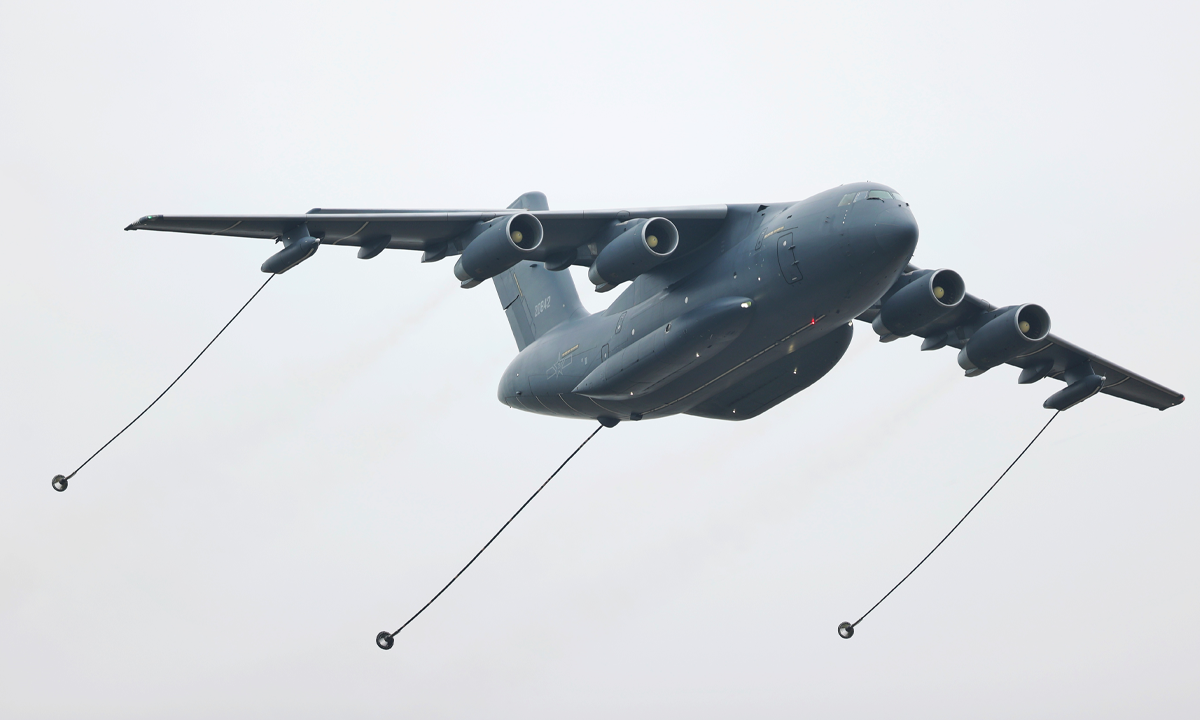
Photo: Cui Meng/GT
Sending a warning Many of the aircraft on display at the airshow, including the J-20, the J-16 and the YU-20, participated in a large-scale military exercises around Taiwan island in August following US house speaker Nancy Pelosi's provocative visit to the island that seriously violated China's sovereignty. Other first-time exhibits, including the KJ-500A early warning aircraft with in-flight-refuel capability, a JH-7A2 fighter bomber carrying what seems to be a stealth air-to-surface cruise missile and an H-6K bomber carrying two what seems to be air-launched ballistic missiles that analysts said can target aircraft carriers, can also play vital roles over the Taiwan question, observers said. The PLA Army's Z-20 utility helicopter, the Z-10 attack helicopter and the Z-8L transport helicopter are also a perfect combination in a potential horizontal landing mission when operated from a Type 075 amphibious assault ship of the PLA Navy, as the Z-20 will lead the assault under the escort of the Z-10, followed by the Z-8L, analysts said. These weapons and equipment are not aimed at Taiwan compatriots, but "Taiwan independence" secessionists and external interference forces, Song said. If it comes to that, the PLA will use the best weapons and equipment there are to counter Taiwan secessionists and end a potential military conflict with the smallest cost; it is also important to show external forces like the US what the PLA is capable of, Song said. "The PLA will put the moves, performances and capabilities displayed at the airshow into practice," he said. Both new missiles carried by the H-6K bomber and the JH-7A2 fighter bomber are stand-off weapons that can contribute to the PLA's potential anti-access and area denial missions against external military interference, Song pointed out. With the YU-20 aerial tanker that can extend the range and endurance of fighter jets, bombers and early warning aircraft, the PLA Air Force can more easily break the first island chain created by the US in an attempt to contain China, analysts said.
The PLA's main combat aircraft, including the J-10C fighter, the J-15 carrier-based fighter, the J-16 heavy fighter, the J-20 stealth fighter, the KJ-500A early warning aircraft and the H-6N long range strategic bomber, are capable of receiving aerial refueling, according to media reports.
-
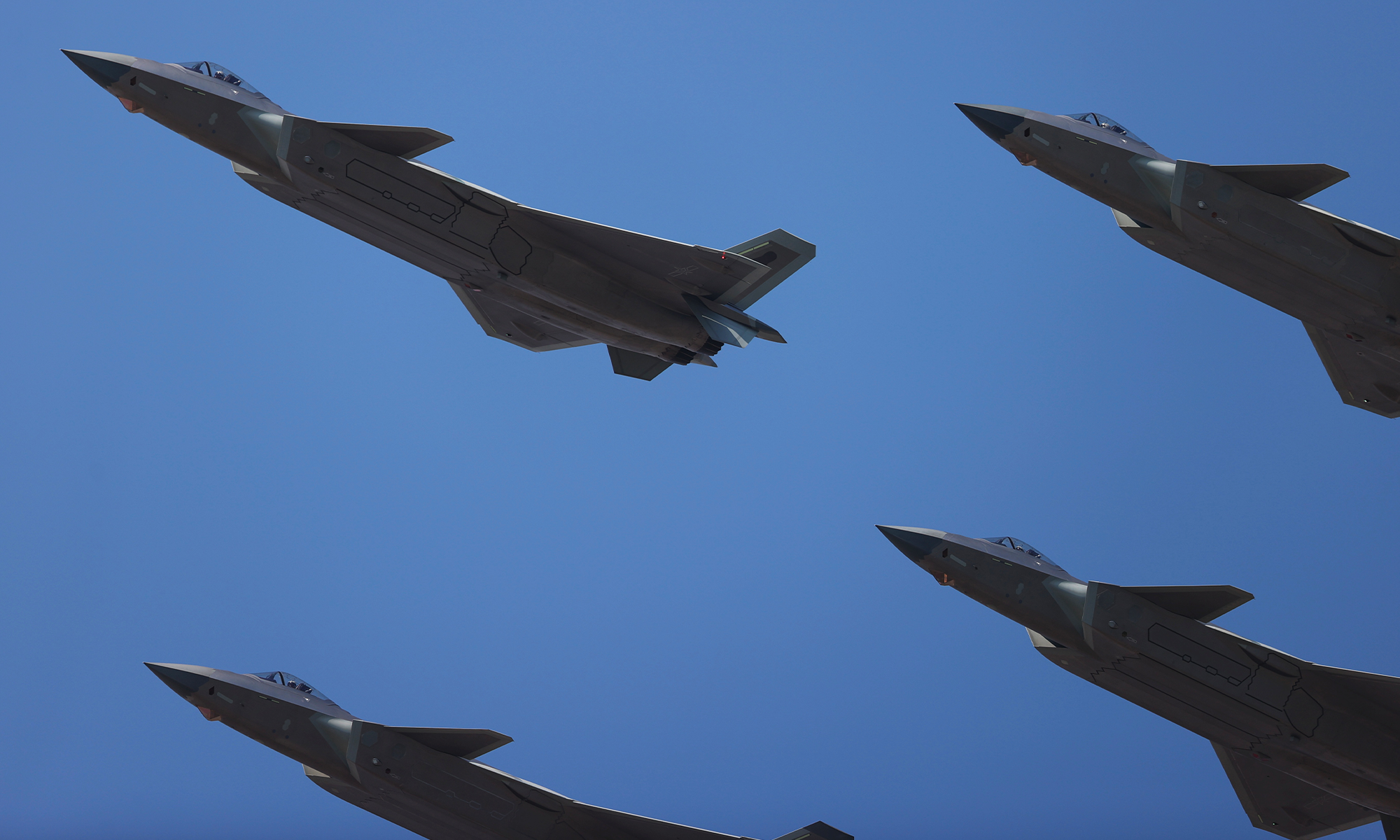 China's homegrown aerial vehicles perform at Airshow China 2022
China's homegrown aerial vehicles perform at Airshow China 2022PHOTO
New rifle series named Type 20, to improve military's combat capabilityThe Chinese military's next-generation service rifle, which used to be called the QBZ191 series, has been formally named the Type 20 series, and the spokesperson of the manufacturer said at ...



